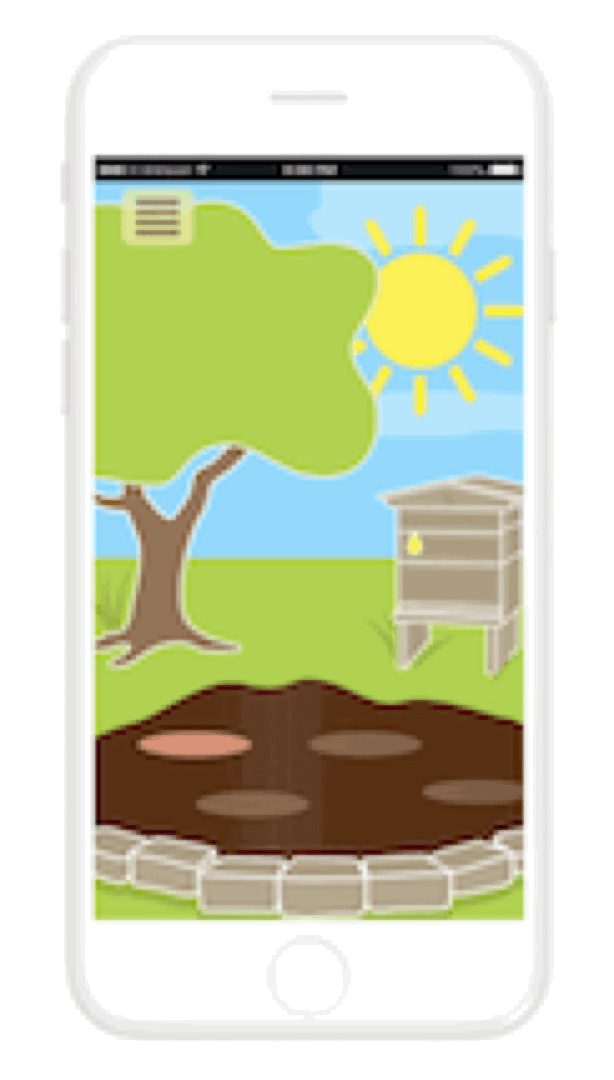ISSUE:
Bees are responsible for pollinating the vast majority of fruits and vegetables that we eat every day, including almonds, avocados, berries, grapefruit, cucumbers and peas. However, they are disappearing at an alarming rate. In 2018, 40% of US honeybee colonies died or disappeared.* Many people are unaware of the connection between bees and the foods that they count on for a nutritious diet.
OPPORTUNITY
Many people, especially those who are disconnected from nature, are not aware of what impact this could have on our daily lives, and raising awareness is key. One way to do this is to engage young people and maybe even their parents with a fun, learning experience. BeePopulate aims to do just that.
In BeePopulate, young learners tend to a garden which attracts charming and lively bees, which they can save and learn about in the Encyclobeedia. In the garden, they plant flowers which need to be watered and keep it weeded. If the garden isn’t well-tended, the flowers die and the bees go away.
THE GAME
When I came onboard, the game concept was in early stages. My role was to establish many of the basic elements such as the game narrative, user, and task flows as well as developing a design aesthetic and overseeing its development across all of the game assets.
First, in order to lay the foundation of the basic game play flow, I started by getting potential users’ thoughts on ideas that they thought made sense such as how the user plants seeds, what is needed to make them grow, and what happens when a bee comes. I also jotted down some of my own thoughts and then from these, created a game narrative.
When finding a look for the bees, we decided that earlier versions were too adult-like. We opted for a vibrant, storybook look so that young users would respond to a happy, peaceful vibe. I wanted them to feel like they were taking a break in a garden. So, I made the designs to be simple and inviting. This was a great decision as all who experienced the game have been enchanted with the aesthetic.
The bees are all based real world varieties and learners can find out interesting facts about each kind. There are also some fun, wacky bees that will surprise and delight them. Giving the bees and other elements human characteristics like facial expressions added to the humor of the game.
Then, I storyboarded screens.
Next, I developed an InVision prototype of a simple game flow.
Because we wanted to see how our game stacked up against the competition, I organized a competitive analysis on similar games with a focus on features. Through this and through each game iteration, we learned what features were most engaging and what users wanted out of the game. For example, we added a camera so that players could capture the bee and put it into an Encyclobeedia for them to reference later. We also added in-game activities for extra excitement. Playing these let them level up faster, giving them more opportunities to plant more varieties of flowers and get more items in the store.
FINAL
The final game that launched is a joyful experience. When asking players’ impressions, they loved interacting with the garden and seeing it grow. They would also talk excitedly about the bees they collected, especially the wacky special edition ones. We also got feedback that people had been made aware of the importance of bees and had learned something. Furthermore, we got many positive reviews. Check it out at www.beepopulate.com.
INSIGHTS
This was the first app that I had worked on from beginning to launch and was an extremely rewarding experience. At each point, I saw how the game changed to incorporate player feedback in order to make it easier and more intuitive to play. Being involved with each part of the iterative process was invaluable.
PROMOTION
Since BeePopulate was an in-house project at Mango Concept to help raise awareness, we wanted to get the word out to potential sponsors and media to amplify its message. So I designed a media kit which was sent out. We outlined the issues facing bees, gave a look inside the game, and made a strong call to action including statistics reinforcing its potential impact on young gamers.
CAPABILITIES
– Creative direction
– Design development
– UX Methodologies
• Competitive analysis
• Storyboarding
• Prototyping
• Task flows
• User flows / journeys








